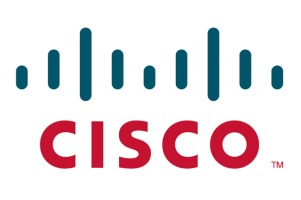Since 2000, when the first camera phone was introduced, the number of mobile users has quintupled. By 2020, there will be 5.5 billion mobile users, representing 70% of the global population, according to the release of the Cisco Visual Networking Index™ (VNI) Global Mobile Data Traffic Forecast (2015 to 2020).
The adoption of mobile devices, increased mobile coverage, and demand for mobile content are driving user growth two times faster than the global population over the next five years. This surge of mobile users, smart devices, mobile video and 4G networks will increase mobile data traffic eight-fold over the next five years.
Smart mobile devices and connections are projected to represent 72% of total mobile devices and connections by 2020—up from 36% in 2015. Smart devices are forecasted to generate 98% of mobile data traffic by 2020. From an individual device perspective, smartphones are dominating mobile traffic. They will account for 81% of total mobile traffic by 2020—up from 76% in 2015. The proliferation of mobile phones, including “phablets” (a hybrid blend of smartphone and tablet features), is increasing so rapidly that more people will have mobile phones (5.4 billion) than electricity (5.3 billion), running water (3.5 billion) and cars (2.8 billion) by 2020.
Mobile video will have the highest growth rate of any mobile application. Consumer and business users’ demand for higher video resolution, more bandwidth, and processing speed will increase the use of 4G connected devices. 4G connectivity share is projected to surpass 2G by 2018 and 3G by 2020. 4G will represent more than 70% of all mobile traffic, and 4G connections will generate nearly six times more traffic per month than non-4G connections by 2020.

“With the ever-increasing billions of people and things that are being connected, mobility is the predominant medium that’s enabling today’s global digitisation transformation,” said Doug Webster, vice president of service provider marketing, Cisco. “Future mobile innovations in cellular, such as 5G, and Wi-Fi solutions will be needed to further address new scale requirements, security concerns, and user demands. IoT advancements will continue to fuel tangible benefits for people, businesses, and societies.”
Mobile data traffic projections and trends:
Global mobile data traffic shows no signs of slowing down
- By 2020:
o Global mobile data traffic will reach 30.6 exabytes per month—up from 3.7 exabytes in 2015.
o Annual global mobile data traffic will reach 366.8 exabytes—up from 44.2 exabytes in 2015. - The forecast annual run rate of 366.8 exabytes of mobile data traffic for 2020 is equivalent to:
o 120X more than all global mobile traffic generated just 10 years ago in 2010.
o 81 trillion images (e.g., MMS or Instagram)—28 daily images per person on earth for a year.
o 7 trillion video clips (e.g., YouTube)—more than 2.5 daily video clips per person on earth for a year. - From 2015 to 2020, global mobile data traffic will grow two times faster than global fixed IP traffic.
- In 2015, 51% of total mobile data traffic was offloaded; by 2020, 55% of total mobile data traffic will be offloaded.
- By 2020, over 75% of the world’s mobile data traffic will be video.
Mobile devices and connections are getting smarter
- There will be 11.6 billion mobile-ready devices/connections—including 8.5 billion personal mobile devices and 3.1 billion M2M connections –up from 7.9 billion total mobile-ready devices and M2M connections in 2015.
- Globally, 67% of mobile devices/connections will be ‘smart’ by 2020—up from 36% in 2015.
- Globally, 98% of mobile data traffic will come from ‘smart’ devices/connections by 2020—up from 89% in 2015.
- Smartphones, laptops, and tablets will drive about 92% of global mobile data traffic by 2020—down from 94% in 2015. M2M traffic will represent 7% of global mobile data traffic by 2020—up from 3% in 2015; while basic handsets will account for 1% of global mobile data traffic by 2020—down from 3% in 2015.
- By 2020:
o 66% of mobile devices/connections will be IPv6-capable—up from 36% in 2015.
o IPv6 traffic will be 54% of total mobile data traffic—up from 13% in 2015.
M2M connections and wearable devices continue to rise
M2M refers to applications that enable wireless and wired systems to communicate with other devices of the same ability (e.g., GPS/navigation, asset tracking, utility meters, security/surveillance video, healthcare monitoring, et al.). Wearable devices can be worn (e.g., smart watches and health monitors) and communicate to the network either directly via embedded cellular connectivity or through another device (primarily a smartphone) via Bluetooth, Wi-Fi, etc. Wearable devices are a subset of the M2M category in the forecast.
- By 2020, M2M connections will represent 26.4% of mobile-connected devices—up from 7.7% in 2015.
- By 2020, M2M connections will generate 6.7% of total mobile traffic—up from 2.7% in 2015.
- Global wearables will grow six-fold from 2015 to 2020.
- By 2020, there will be more than 600 million wearable devices in use, up from nearly 97 million in 2015.
Mobile network speeds and 4G connection growth
- Average global mobile network speeds will increase 3.2 fold from 2015 (2.0 Mbps) to 2020 (6.5 Mbps). Global 4G adoption is the primary catalyst for mobile speed improvements.
- By 2020:
o 4G connections will account for 40.5% of all mobile connections–up from 13.7% in 2015).
o 3G connections will account for 38.7% of all mobile connections—up from 33.7% in 2015.
o 2G connections will account for 13.5% all mobile connections—down from 52.3% in 2015. - 4G traffic will grow 13-fold from 2015 to 2020.
- By 2020, 4G connections will account for 72% of total mobile data traffic—up from 47% of total mobile data traffic in 2015.
Wi-Fi hotspots are growing
- Globally, total Wi-Fi hotspots, including home spots, will grow 7X from 2015 (64 million) to 2020 (432 million). Globally, home spots will grow from 57 million (2015) to 423 million (2020).
- In 2015, monthly Wi-Fi offload traffic (3.9 exabytes) exceeded monthly mobile/cellular traffic (3.7 exabytes) for the first time.
- By 2020, 38.1 exabytes Wi-Fi offload traffic will be generated each month, continuing to exceed projected monthly mobile/cellular traffic (30.6 exabytes).
Voice-over-Wi-Fi (VoWi-Fi) primed for growth
Given the growth and mobile networking role of Wi-Fi technologies, this year’s study again compares VoWi-Fi to other mobile voice services. Previous VoWi-Fi offerings had limitations that affected adoption and end-user experiences. Today’s carrier-grade VoWi-Fi services can be delivered to non-SIM devices, such as Wi-Fi-only tablets.
- By 2016, VoWi-Fi will exceed VoLTE in the number of minutes used per year.
- By 2018, VoWi-Fi will exceed VoIP in the number of minutes of used per year.
- By 2020, VoWi-Fi minutes of use will account for half – 53% – of all mobile IP voice traffic.
- By 2020, the number of Wi-Fi-capable tablets and PCs (1.7 billion) will be more than three times the number of cellular-capable tablets and PCs (548 million).
Regional mobile data traffic growth rates (2015–2020)
1. The Middle East and Africa (15-fold growth)
2. Asia-Pacific (9-fold growth)
3. Central and Eastern Europe (8-fold growth)
4. Latin America (8-fold growth)
5. Western Europe (6-fold growth)
6. North America (6-fold growth)
Cisco mobile VNI forecast methodology
The Cisco® VNI Global Mobile Data Traffic Forecast (2015‑2020) relies upon independent analyst forecasts and real-world mobile data usage studies. Upon this foundation are layered Cisco’s own estimates for mobile application adoption, minutes of use and transmission speeds. Key enablers such as mobile broadband speed and device computing power are also factored into Cisco mobile VNI projections and findings. A detailed methodology description is included in the complete report.
Comment on this article below or via Twitter: @ VanillaPlusMag OR @jcvplus






